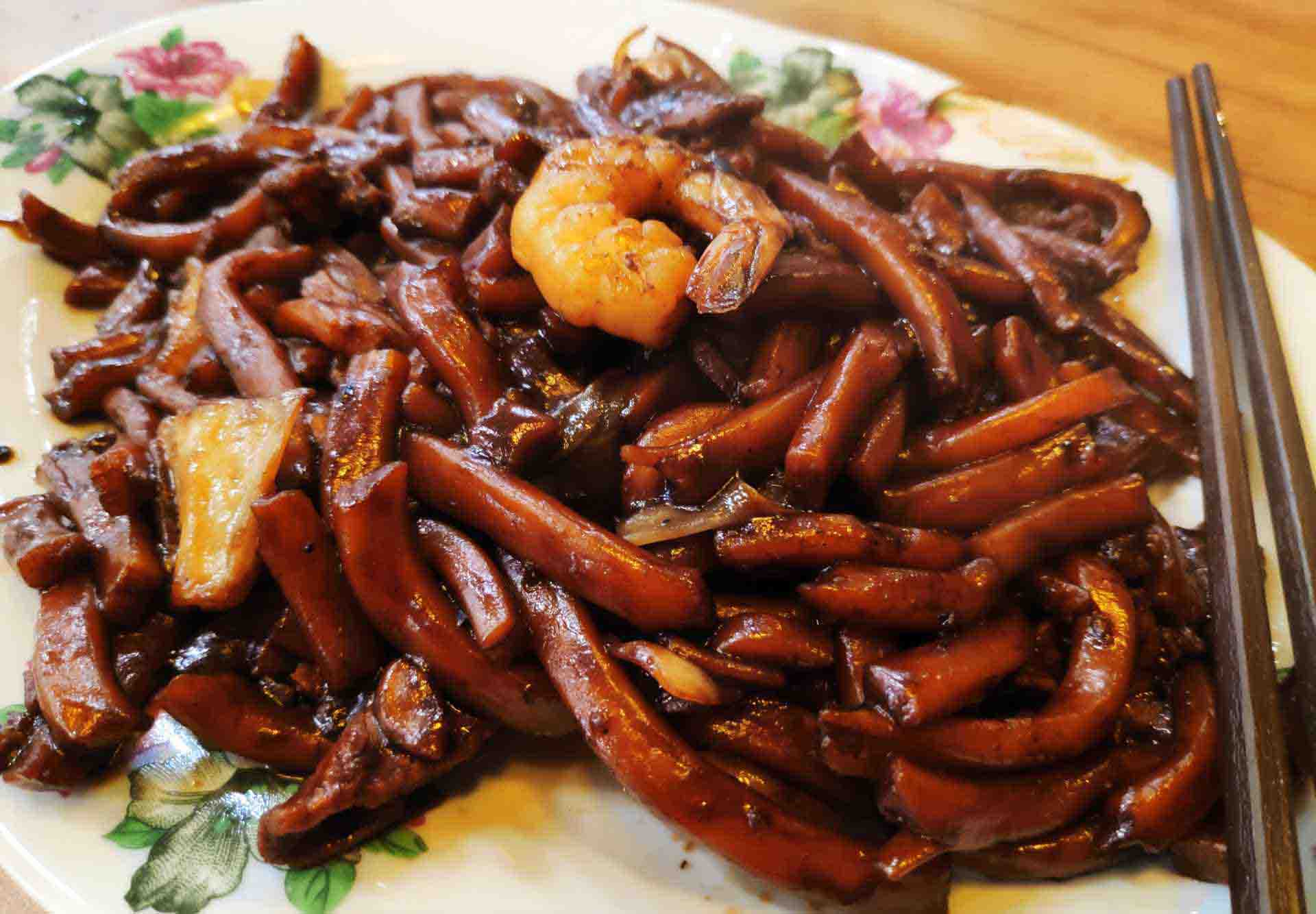The Hokkien Mee noodle dish is well-liked all over Southeast Asia and is prepared by stir-frying thin rice noodles. Fujian Province in China is the birthplace of this dish, which is also known as Hokkien Char Mee and Hokkien Fried Noodles.
------Advertisement-----
Several versions exist, but this one is inspired by the Malaysian dish served in Kuala Lumpur; it features pork, pig crackling, and shrimp, and is seasoned with a sweet dark soy sauce.
The dishes of Malaysia, Indonesia, and Singapore that include Hokkien Mee are very well-liked around the world. In some preparations, the noodles are cooked in broth, whereas in others, they are stir-fried. Yellow egg noodles, which are both soft and chewy, are the unifying factor.
------Advertisement-----
Even though they look and taste a lot like traditional lo mein noodles, there are several methods to prepare them. You might find a shrimp hae mee noodle soup in Penang (northwest Malaysia).
There are three distinct kinds of Thai soy sauce that must be used in this recipe. The KL version of the meal is particularly sugary. Hence a salty component is essential. Specifically, you’ll want to stock up on Thai sweet soy sauce (or the Indonesian equivalent, kecap manis). Both are sticky and delicious, like thick syrup.
------Advertisement-----
INGREDIENTS:
- 12 ounces of skin-on lean pork belly
- 8 ounces of peeled and deveined shrimp
- 3 cloves of finely chopped garlic
- 1 pound of hokkien noodles
- 2 1/2 cups of shredded napa cabbage
- 2 cups of shredded Taiwanese cabbage
- 2/3 cup of pork stock or low sodium chicken stock
- 3 tablespoons of Thai black soy sauce
- 2 tablespoons of Thai sweet soy sauce
- 2 tablespoons of cornstarch
- 2 tablespoons of oyster sauce
- 1 tablespoon of Thai thin soy sauce
- 1 tablespoon of Shaoxing wine
- 1/2 teaspoon of sesame oil
- 1/2 teaspoon of salt
- 1/4 teaspoon of ground white pepper
INSTRUCTIONS:
- Halve the pork belly lengthwise, separating the lean meat from the fatty layer under the skin.
- Thinly slice the pork belly fat that is not covered by the skin. You should have roughly 170g (6 ounces) in the end.
- Removing the rough skin off the cracklings requires using the fatty end of the pig belly. To make bite-sized pieces, cut into quarter-inch (or 6 mm) slices and then in half.
- Throw the pork belly pieces, half a teaspoon of salt, and half a cup of water into a cast iron skillet. The water should be allowed to evaporate, and the pig fat should begin to render after about 10 minutes of simmering.
- Simmer and cook for 15 minutes, turning the pork belly chunks regularly, until they are golden and crisp.
- Reserve the pork fat for the rest of the dish and other purposes (you’ll have plenty). Set aside on a paper towel.
- Then, you should wash them and dry them off. The shrimp can also be velveted using our shrimp velveting technique, although this is entirely discretionary.
- Blend together the low sodium stock, oyster sauce, sesame oil, white pepper, Thai sweet soy sauce, Thai black soy sauce, Thai thin soy sauce, and more (or water). Place aside.
- Bring a wok up to a medium flame. Two teaspoons of rendered pork lard (or vegetable oil). After browning the pork belly in a hot wok, remove it and set it aside.
- The shrimp should be added after another 2 teaspoons of fat or oil. Just till it gets pink, toss for 30–45 seconds. Take out of the wok and put it to the side.
- Chop some garlic and add it to the pan after you’ve added another tablespoon of oil or fat. When the timer goes off, add the two types of shredded cabbage. Keep stirring for 30-60 seconds. Put in the wine from Shaoxing.
- Put the noodles in next. Toss the ingredients together and add the sauce. Stir-fry until everything is well-combined and pushed to the center of the wok. Stirring occasionally, bring the sauce and noodles to a simmer. You need to keep cooking for another minute or two until the sauce has decreased. While waiting, mix together your cornstarch and water.
- You can re-introduce the pork belly and the shrimp to the wok. Mix together by stirring for a while.
- Combine half of the cornstarch and water and stir it in. Add extra cornstarch slurry if you want a thicker sauce. If you add too much slurry and the sauce thickens, add a little water and whisk till desired consistency.
- Scatter the pork cracklings on top and set the dish before the table.
